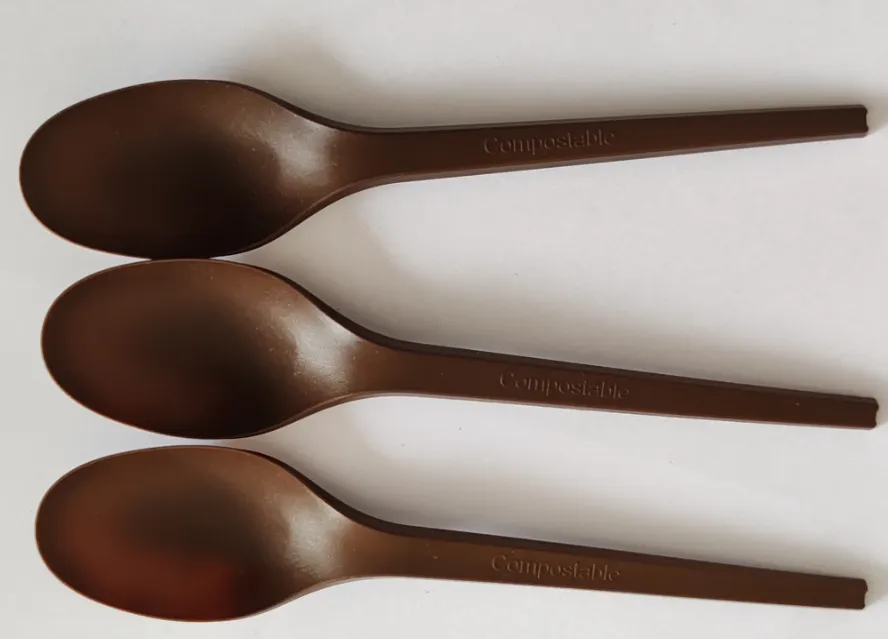 291
291
China is a large agricultural country, the annual crop straw can be collected up to 900 million tons, equivalent to 1/4 of the world's total straw production. For a long time, straw treatment has been a problem plaguing the sustainable development of agriculture: open burning leads to air pollution, direct return to the field is inefficient, and random piling occupies land and pollures water sources. How to convert a huge amount of straw into high-value resources has become a key proposition to achieve the goal of "dual carbon" and the green transformation of agriculture.
In recent years, the application of straw powder in the field of biodegradable plastics has opened up an innovative path. Its core is to combine natural components such as cellulose and lignin in straw with bio-based polymer materials (such as polylactic acid PLA, polyhydroxyl fatty acid ester PHA) to form environmentally friendly composite materials. This technology not only provides exports for straw recycling, but also promotes the plastics industry to upgrade in the direction of low carbon and recycling.
First, the application of straw powder
The filler. Blending straw powder with bio-based polymer materials (such as polylactic acid PLA, polyhydroxyl fatty acid ester PHA, etc.) can reduce the cost of plastic by 30%-50%, and improve the rigidity and heat resistance of the material, which is suitable for tableware, packaging and other fields. Cellulose and lignin in straw flour can enhance the mechanical properties of plastics (such as tensile strength, modulus).
Reinforcing material. Through surface modification (such as alkali treatment, coupling agent treatment) to improve the compatibility of straw powder and polymer, improve the interface bonding force of composite materials. Suitable for the preparation of packaging materials, tableware, agricultural mulch, etc.
Bio-based raw materials. Straw powder can be converted into glucose, lactic acid and other monomers by hydrolysis, fermentation and other processes, and then further synthesized biodegradable plastics. For example, glucose obtained from the hydrolysis of straw can be used to produce polylactic acid (PLA).
Second, the triple advantages of straw powder
Environmental protection. Reduce the use of petroleum-based plastics and reduce your carbon footprint. Straw powder can be completely biodegradable and eventually converted into CO₂ and water, reducing white pollution.
Recycling of resources. Agricultural straw (such as rice straw, wheat straw) has a wide range of sources and low cost, which alleviates the environmental problems caused by straw burning or waste.
Performance optimization. The addition of straw powder improves the breathability and degradation rate of plastics, for example, the degradation cycle of PLA/straw mulch can be shortened to 6 months.
Third, the challenge of large-scale application of straw powder
Compatibility issues. The polar and hydrophilic interface of straw powder with non-polar polymer (such as PLA) is weak, which may lead to the deterioration of mechanical properties of the material.
Degradation rate control. The addition of straw powder may accelerate the degradation of plastics, but it is necessary to balance the degradation rate with the actual use needs (such as service life).
Processing technology limitations. Straw powder has high moisture content and complex fiber structure, so it needs pretreatment (drying, crushing, modification) to adapt to plastic processing technology.
Handle stress at scale. Straw dispersion is strong, it is necessary to establish a regional collection, storage and transportation system, supporting standardized pretreatment facilities (such as drying, crushing).
Fourth, the solution of straw powder
Through the special tempering pretreatment process, adding biological tone agent and other technical treatment, the problems existing in straw processing were broken through, the rigidity and hardness of straw were increased, the flexibility and toughness were reduced, and the straw was successfully micro-pulverized.
After the application of this process, the straw can be treated immediately after leaving the ground, suitable for both dry and wet, improve quality, save space and time; Corn straw, wheat straw, rice straw, cotton straw, soybean straw, tree pruning, potato residue, bagasse and other waste biomass are suitable for this process; The particle size of the product can be controlled in 10-1000 mesh, the moisture content is less than 10%, and it can be directly mixed with plastic when it is less than 3%, and has good compatibility.
120 mesh and 300 mesh straw powder
Practical application cases
Agricultural mulch. The mulch film made from the mixture of straw powder and PLA can be degraded naturally after crop harvest to avoid residual pollution.
Packaging materials. Straw powder enhanced biodegradable plastic bags, lunch boxes, knives, forks and spoons, etc., have been promoted in some areas.
3D printing supplies. Straw powder and PLA composite wire, both environmental protection and printing performance.
Production of corn stalk flour +PLA meal spoon. The corn stalk powder (30%, adjustable) and polylactic acid (PLA, 70%) are processed into biodegradable disposable tableware, with bright appearance, moderate hardness, economic and environmental protection. Under the new environmental protection requirements, straw powder is an ideal plastic filling raw material which can significantly reduce cost and increase efficiency.
Future trends
Technological innovation: Develop efficient straw pretreatment technology (such as nanocellulose extraction) to improve material properties.
Policy support: With the promotion of the global plastic ban, the market demand for straw-based biodegradable plastics will further expand.
Interdisciplinary: Combining materials science, bioengineering and other fields, explore the path of high-value utilization of straw.
Through technological breakthroughs and industrial collaboration, straw powder is expected to become an important raw material in the field of biodegradable plastics and promote the development of circular economy.


